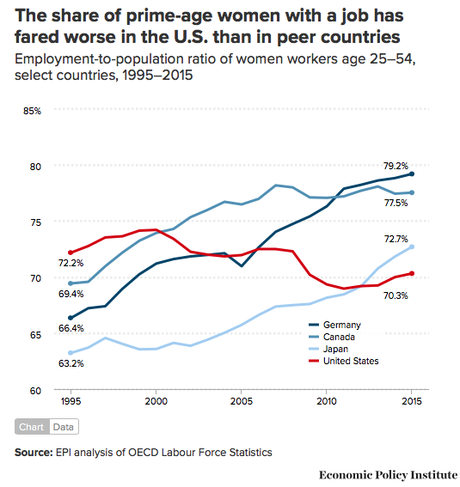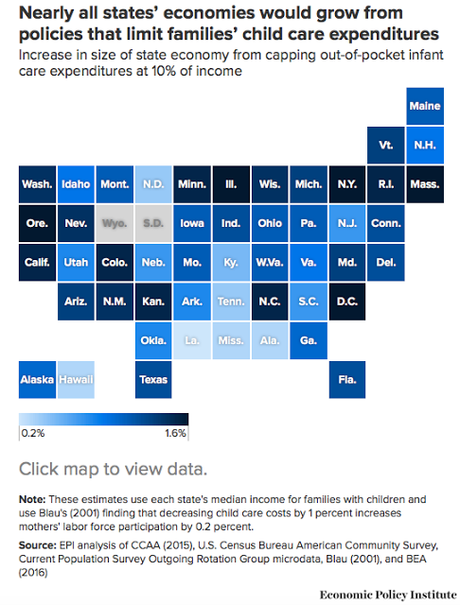
The following post was written by Elise Gould and Jessica Schieder for the Economic Policy Institute:
Women hold 49.5 percent of payroll jobs. The health of the female workforce is hugely important to the health of the overall labor force. And yet—in crucial ways—lawmakers in the United States have avoided commonsense policy changes that have been shown to make it easier for women to balance paid work and their still disproportionate share of responsibilities at home. Policies like paid parental leave and subsidized child care increase parental labor force participation, which would boost the economy. Many of our peer nations have such policies, and, not surprisingly, their employment rates are much higher than ours. The figure above shows just how far U.S. women have fallen behind some of our international peers. The graph shows the share of women age 25–54 with a job between 1995 and 2015 in Germany, Canada, Japan, and the United States. While women’s prime-age employment-to-population ratio (EPOP) rose over that 20-year period in those peer nations, it actually fell in the United States. Higher employment among women would mean more earnings for families and more economic activity for the country. If prime-age women had the same EPOP in the United States as the average rate of Canada and Germany, 78.4 percent, there would be roughly 5.1 million more employed women in the U.S. labor force. All else equal, this would increase GDP by 3.4 percent, representing more than $600 billion in additional economic activity. Even if policymakers decided to address just one component of the difference in social policy between the U.S. and these peer countries and made an ambitious investment in accessible, affordable, and high quality child care, many more parents, especially mothers, would be available for paid work. If child care expenditures were capped at 10 percent of a family’s income, GDP would increase by as much as 1.2 percent, or $210.2 billion. A full menu of work–family policies ranging from paid family leave to affordable child care could go a long way in making it easier for women with children to enter or stay in the labor force. As a result, mothers’ labor force participation would increase substantially, helping to boost economic growth and close the gender employment gap and gender wage gaps


